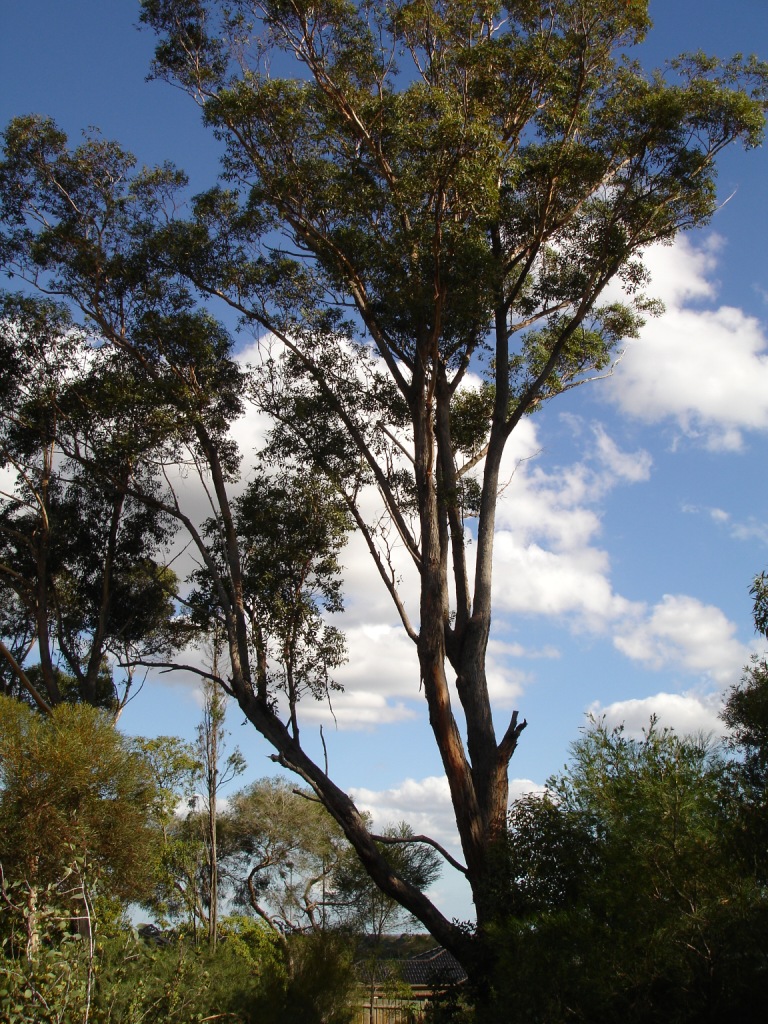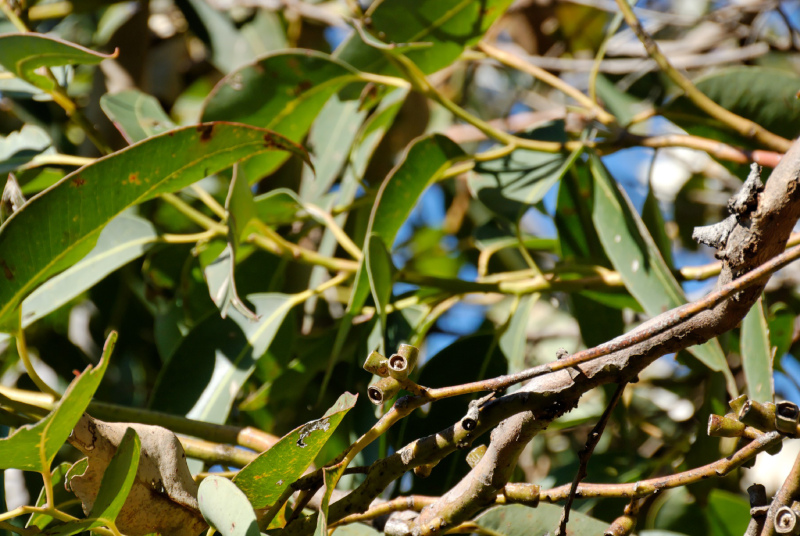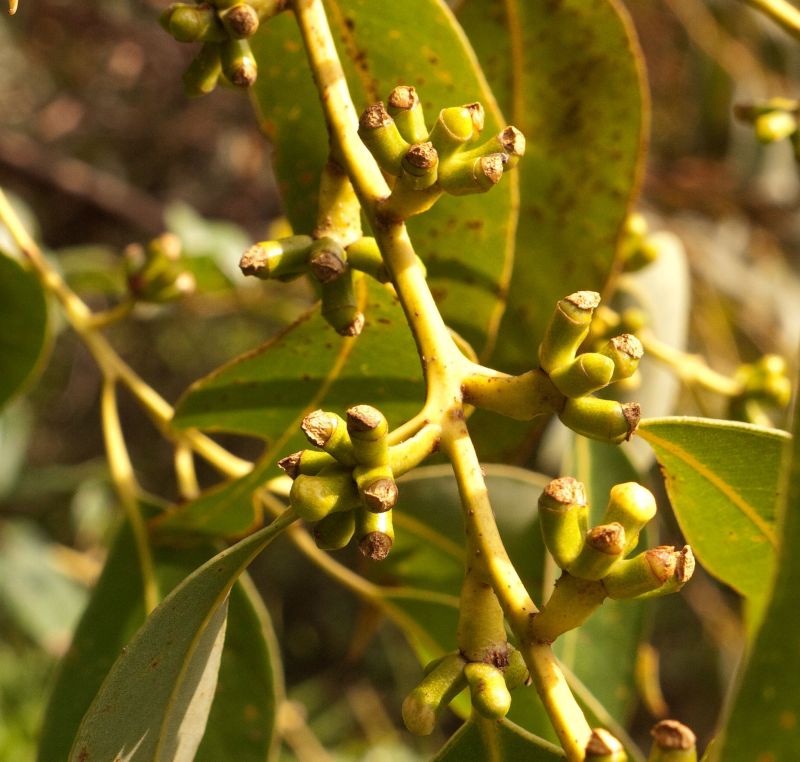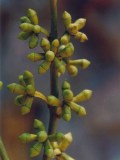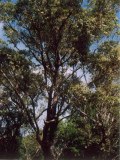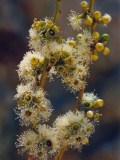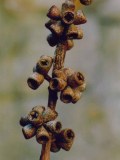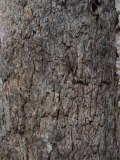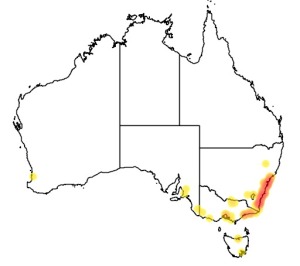Colours
Distinguishing features
In favourable conditions, it can grow as a tall straight-trunked tree, although it is often shorter in poorer situations. In exposed areas behind sand dunes, it is a lower spreading tree with its leaves forming a dense crown, or even a multitrunked mallee form in poor sandy soils.
It has a swollen woody base known as a lignotuber which can reach 6 m in diameter. The thick, fibrous rough bark covers the trunk and larger branches, and is vertically furrowed. The bark is more greyish brown in trees of inland forest origin, and a redder brown in those of more coastal origin. The bark on smaller branches is pale grey. The adult leaves are stalked, broad-lanceolate, to 10 to 16 cm long by 2–4 cm wide, and are dark green above, and paler below.
Developing from small cylindrical or club-shaped (clavate) buds, the white flowers appear from January to April, and are arranged in groups of seven to eleven in umbellasters. The woody fruits, or gumnuts, are ovoid or cylindrical in shape, and measure between 7–12 mm long and 4–6 mm wide, with the valve near the rim or enclosed.
Seedlings and young plants have more ovate leaves which are arranged oppositely along the stems for the first five or six pairs until they assume the adult alternately arranged configuration. They measure 4.5 to 11 cm long and 1.3 to 5.5 cm wide. (Wikipedia)
Size
- Up to 4000 cm (Height)
